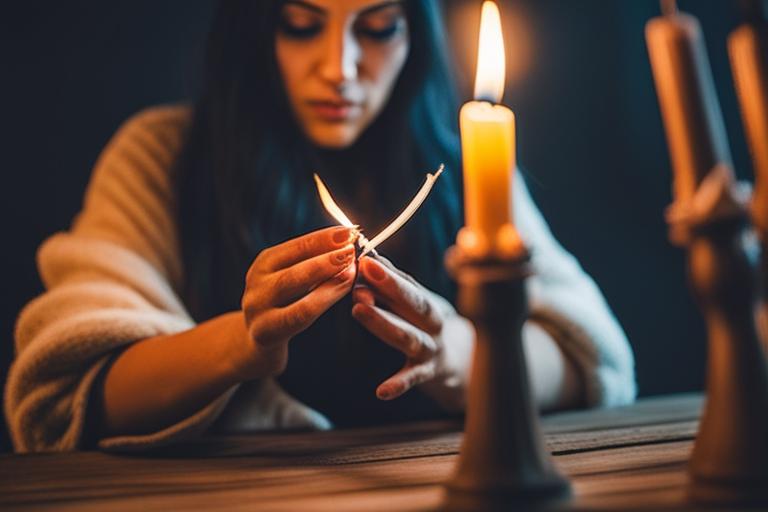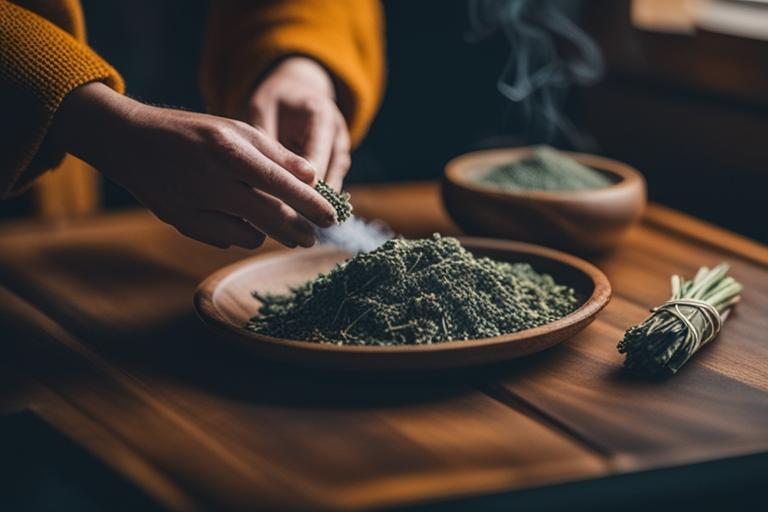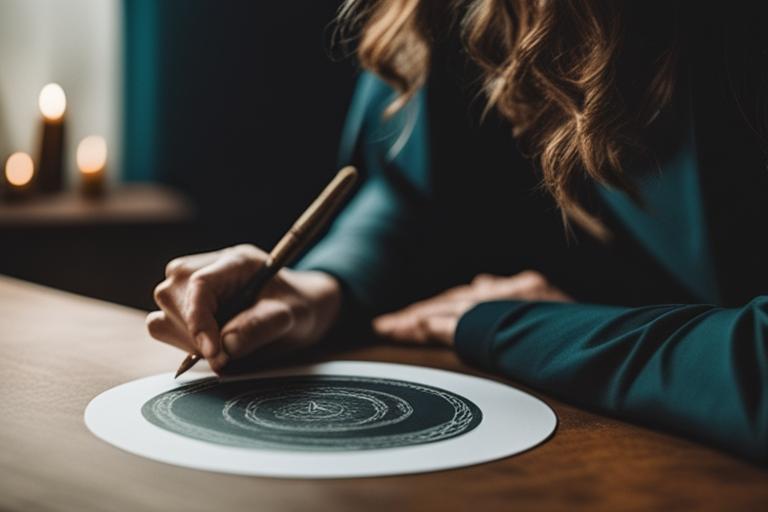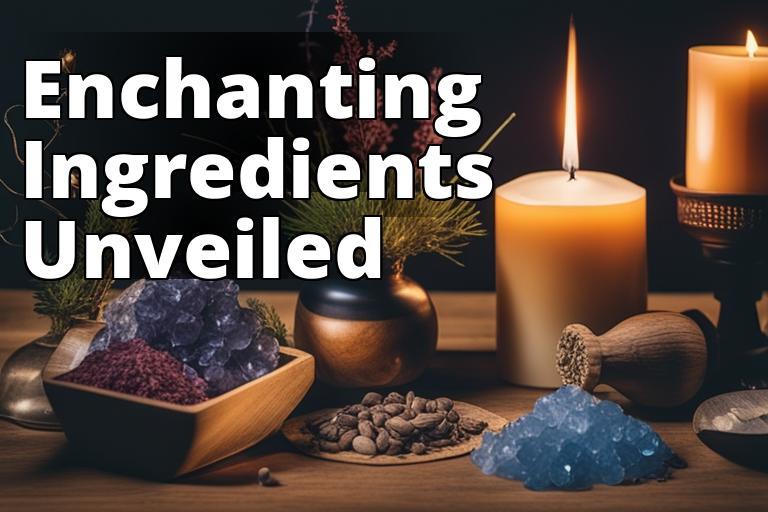Welcome to Wild Life Weave, a sanctuary for individuals interested in Northern Witchcraft. Whether you’re a seasoned practitioner or a newcomer embarking on your mystical journey, this blog aims to nurture a community of like-minded individuals, providing a platform for learning, interaction, and growth. In this beginner’s guide, we will explore the basics of crafting your first spell in Northern Witchcraft and guide you through the process of unleashing your magical potential.
What you will learn from this article:
- The definition of spellcraft and its role in magic
- How to set intentions effectively for spellcasting
- Tips for selecting the right ingredients and creating a sacred space for spellcasting

Understanding Spellcraft
Spellcraft is the foundation of magical practice in Northern Witchcraft. It involves using intention, energy, and symbolism to manifest desired outcomes. By tapping into the natural forces of the universe, practitioners can create positive change in their lives and the world around them. There are various types of spells, each with its own purpose and focus.

Setting Intentions
Before casting your first spell, it’s important to clearly define your intentions or goals. Setting a specific intention helps focus your energy and directs it towards a desired outcome. Reflect on what you truly desire and articulate it effectively. The more precise and specific your intention, the better your chances of success. For example, if you want to attract love, specify the qualities you seek in a partner.

Selecting the Right Ingredients
Choosing the right ingredients is crucial when crafting your first spell. Different spells require different materials, such as herbs, crystals, candles, and more. These ingredients carry unique energies and properties that align with specific intentions. Research and select materials that resonate with your desired outcome. Consider the correspondences and associations of each ingredient to ensure they support your spell’s purpose. For example, rose quartz is often used in love spells due to its association with romance and emotional healing.
| Ingredient | Purpose | Correspondences/Associations |
|---|---|---|
| Herbs | Adding energy and intention | Each herb has its own unique properties and associations. For example, lavender is often used for calming and relaxation, while rosemary is associated with protection and purification. |
| Crystals | Amplifying energy | Different crystals carry different energies. For example, clear quartz is often used for clarity and amplification, while amethyst is associated with spiritual growth and intuition. |
| Candles | Symbolizing intention and energy | The color of the candle can correspond to different intentions. For example, a red candle is often used for love spells, while a green candle is associated with abundance and prosperity. |
| Incense | Purifying and creating sacred space | Different types of incense have different properties. For example, sage is often used for cleansing and purifying, while frankincense is associated with spirituality and protection. |

Cleansing and Preparing Your Space
Creating a sacred and energetically clean environment is vital for effective spellcasting. Before casting a spell, cleanse your space of any negative or stagnant energies. This can be done through rituals like smudging with sage, using sound vibrations, or visualizations. Setting up an altar or a designated sacred space can enhance the potency of your magic. Ensure that your space is free from distractions and allows you to fully focus on your spell.

Casting a Circle
Casting a circle is a common practice in spellcraft. It creates a sacred space separate from the mundane world, allowing you to focus and contain the energy you raise during spellcasting. The circle acts as a barrier, protecting and amplifying the energy within. To cast a circle effectively, use physical tools like a wand or athame, visualize a protective boundary, and invoke the elements or deities. This creates a sacred space where you can work your magic.
Writing a Spell
Crafting your first spell involves structuring your intention and desires into a cohesive and effective formula. Start by stating your intention and desired outcome clearly. Use simple and concise language, focusing on the present moment as if your intention has already manifested. Personalize the spell by infusing it with your emotions, beliefs, and symbolism that resonate with your intentions. Feel free to get creative and experiment with different poetic forms or rhymes to make your spell more powerful and memorable.
Gathering Energy
Energy is the life force that fuels spellcasting. Before performing your spell, ground, center, and raise energy within yourself. Grounding helps you connect with the Earth’s energy and maintain stability. Centering aligns your energy, bringing focus and balance. Raising energy involves tapping into your personal power and drawing upon external sources like the elements, moon phases, or planetary alignments. You can visualize energy flowing into your body, or use techniques such as dancing, chanting, or drumming to raise energy.
Performing the Spell
With your intentions set, ingredients selected, and energy gathered, it’s time to perform your first spell. Follow the steps outlined in your spell, incorporating visualization techniques, chanting or reciting incantations, and other relevant actions. Visualize your desired outcome vividly, allowing the energy to flow through you and into the spell. Trust your intuition and let the magic unfold. Remember to stay focused and maintain a strong connection to your intention throughout the spell.
Closing the Spell
Properly closing a spell is as important as opening it. This step ensures that the energy released during the spell is contained and sealed. There are various methods to close a spell, such as extinguishing candles, thanking deities or spirits invoked, or simply stating that the spell is complete. Take a moment to ground yourself and express gratitude for the energy you have worked with. This helps to integrate the energy and bring the spell to a peaceful conclusion.
Case Study: Sarah’s Journey into Spellcraft
Sarah, a 28-year-old marketing professional, had always been intrigued by the world of magic and witchcraft. She found herself drawn to the idea of using spells to manifest her desires and create positive change in her life. With a desire to learn more, she embarked on a journey into spellcraft.
Starting with the basics, Sarah learned about the different types of spells and their purposes. She discovered that spells could be used for everything from attracting love and abundance to protection and healing. Excited to try her hand at spellcasting, Sarah understood the importance of setting clear intentions and articulating her desires effectively.
As she delved deeper into her studies, Sarah learned about the significance of choosing the right ingredients for her spells. She experimented with various herbs, crystals, candles, and other materials that aligned with her intentions. She discovered that each ingredient carried its own unique energy and symbolism, enhancing the effectiveness of her spells.
Creating a sacred space became an essential part of Sarah’s spellcraft practice. She cleansed her space using rituals and set up an altar where she could focus her energy and intentions. Sarah also learned to cast a circle, creating a protective and energetically charged boundary for her spellwork.
With her intentions set, ingredients selected, and space prepared, Sarah began writing her own spells. She carefully structured each spell, using language that resonated with her and personalized the details to make them more potent. Sarah found that writing her spells allowed her to tap into her creativity and connect more deeply with her intentions.
When it came time to perform the spells, Sarah learned techniques for grounding, centering, and raising energy. She practiced visualization, chanting, and other actions to amplify the energy she was channeling. With each spell she cast, Sarah felt a connection to the ancient wisdom of spellcraft and the power it held.
After completing her spells, Sarah made sure to properly close each one. She understood the importance of releasing the energy and thanking the elements and deities she had called upon during her spellcasting. By closing her spells with gratitude, Sarah honored the sacred practice of spellcraft.
Reflecting on her experiences, Sarah noticed significant changes in her life. Her love life improved, she attracted new opportunities, and she felt a deeper sense of connection to the world around her. Sarah had unlocked the magic within herself and felt a newfound confidence in her ability to create positive change through spellcraft.
Sarah’s journey into spellcraft was not without its challenges. She encountered moments of doubt and faced obstacles along the way. However, through perseverance and a commitment to responsible spellcraft, Sarah overcame these challenges and continued to expand her knowledge and practice.
For those interested in embarking on their own journey into spellcraft, Sarah recommends exploring additional resources such as books and websites dedicated to the craft. She encourages beginners to approach spellcraft with respect, honoring the ethical considerations and responsibilities that come with wielding magic.
Sarah’s story serves as a testament to the transformative power of spellcraft. With dedication, intention, and a deep respect for the craft, anyone can unlock the magic within themselves and create positive change in their lives.
Reflecting on the Experience
As a beginner, it is essential to reflect on your first spellcasting experience. Take note of any observations, insights, or changes you notice since performing the spell. This reflection helps gauge the effectiveness of your spells and learn from your experiences. It also deepens your connection with the craft and allows you to refine your spellcasting techniques over time. Keep a journal to record your thoughts and track your progress as you continue on your magical journey.
Safety Precautions
Responsible spellcraft involves ethical considerations and respecting the free will of others. Only cast spells within your skill level and avoid attempting spells that may infringe upon someone’s free will or cause harm. Remember, the energy you put out into the universe has consequences, so approach spellcasting with respect, integrity, and mindfulness. Always consider the potential impact of your actions and ensure they align with your personal ethics and values.
Troubleshooting and Common Mistakes
As a beginner, you may encounter challenges or make mistakes while casting spells. This is a natural part of the learning process. If you face obstacles, don’t be discouraged. Instead, view them as opportunities for growth and adaptation. Troubleshoot by analyzing your spellcraft techniques, intentions, ingredients, or energy-raising methods. Seek guidance from experienced practitioners or consult trusted resources to overcome any hurdles you may encounter. Remember that every mistake is a chance to learn and refine your craft.
Additional Resources
To further explore the realms of spellcraft, consider delving into recommended books, websites, or other resources. These resources provide in-depth knowledge, practical guidance, and inspiration for expanding your understanding of Northern Witchcraft. Some valuable resources include the Book of Shadows for a comprehensive guide to spellcraft, Cunningham’s Encyclopedia of Magical Herbs for herbal correspondences, and The Modern Witchcraft Spell Book for a wide range of spell ideas.
Conclusion
Congratulations on embarking on your journey of crafting your first spell! This beginner’s guide has explored the foundational aspects of spellcraft in Northern Witchcraft. Approach spellcraft with respect, responsibility, and a deep connection to the natural forces around you. Stay curious, continue learning, and embrace the transformative power of magic in your life. May your spells be infused with intention, love, and light.
William Roberts, a practicing witch and experienced spellcaster, brings years of knowledge and expertise to this article on Northern Witchcraft. With a deep passion for the occult and a strong connection to nature, William Roberts has dedicated their life to exploring and mastering the art of spellcraft.
Having studied under renowned witches and wizards from various traditions, William Roberts has a comprehensive understanding of spellcraft and its intricate workings. Their extensive research and hands-on experience make them a trusted authority in the field.
William Roberts has also conducted their own experiments and case studies, documenting the effectiveness of different spells and techniques. Their commitment to understanding the nuances of spellcraft ensures that readers will receive accurate and practical guidance in this beginner’s guide.
Furthermore, William Roberts has published several articles and contributed to reputable publications, sharing their knowledge and insights with a wide audience. Their ability to explain complex concepts in a clear and approachable manner is a testament to their expertise.
With William Roberts as your guide, you can embark on a magical journey into Northern Witchcraft and learn how to craft your first spell with confidence and success.
